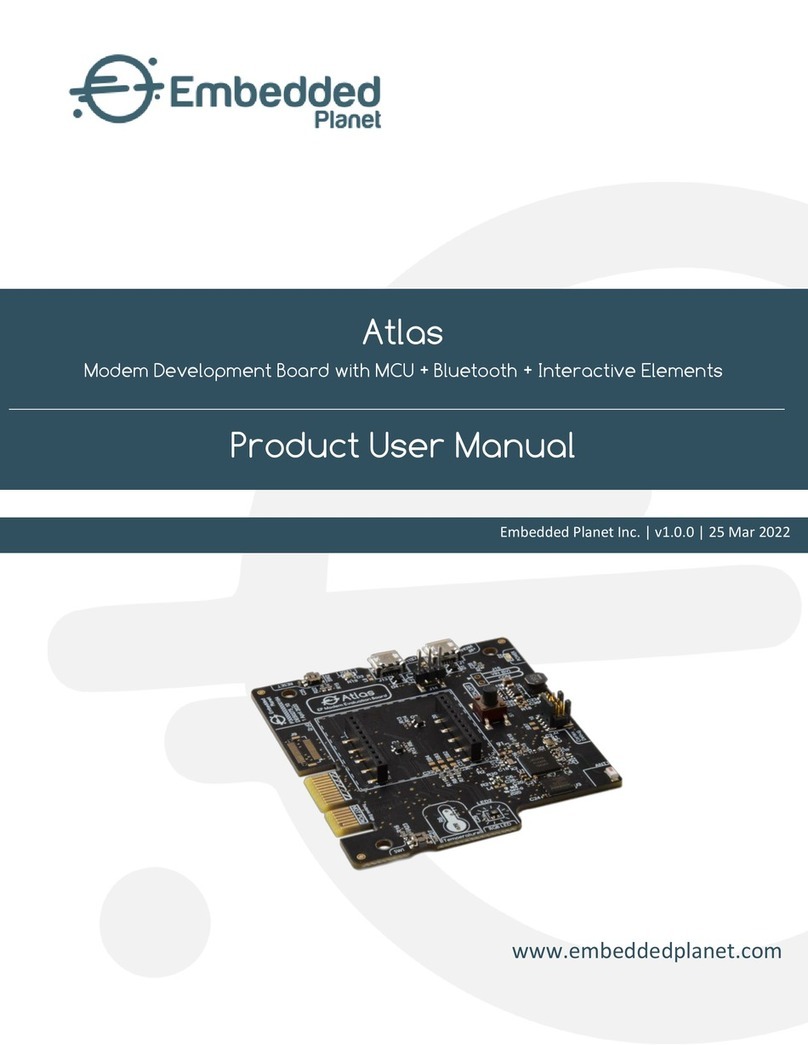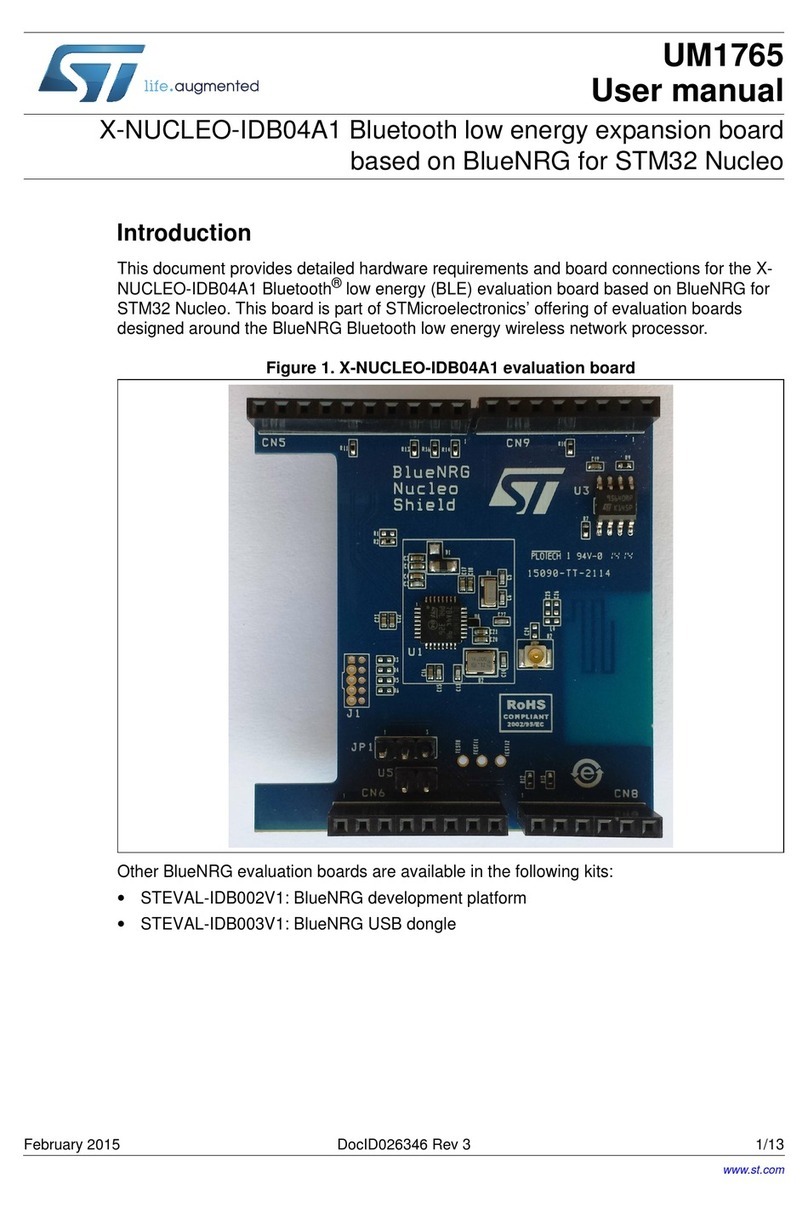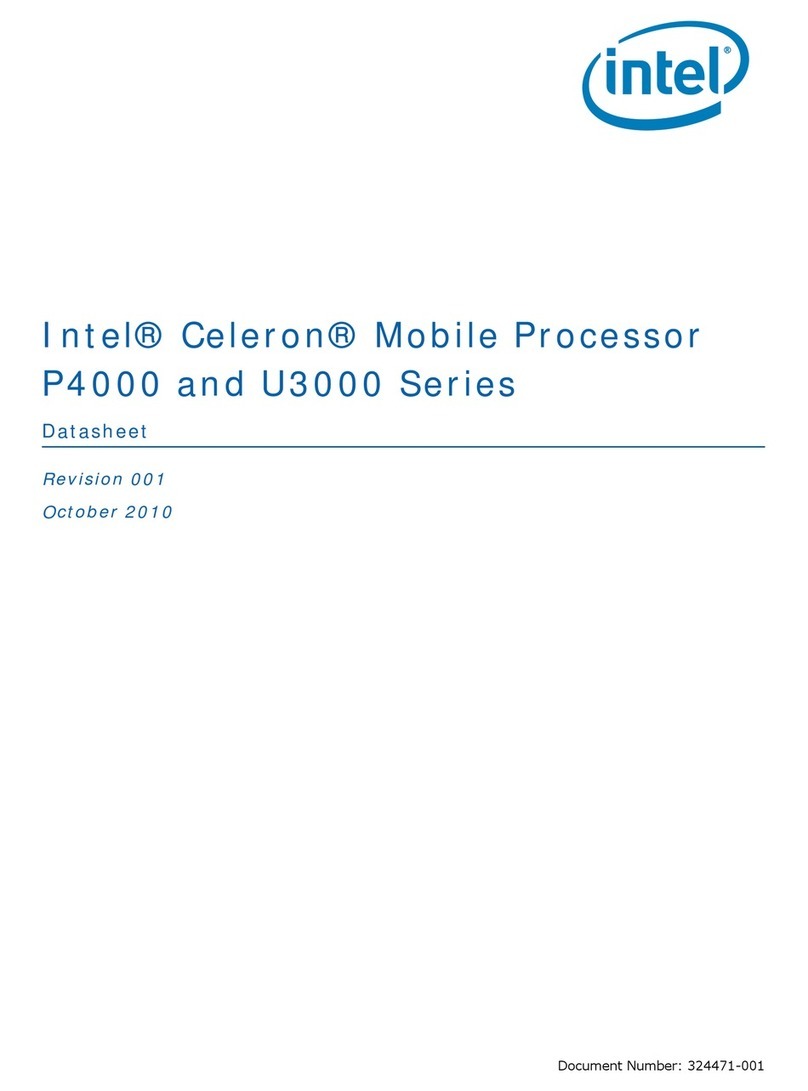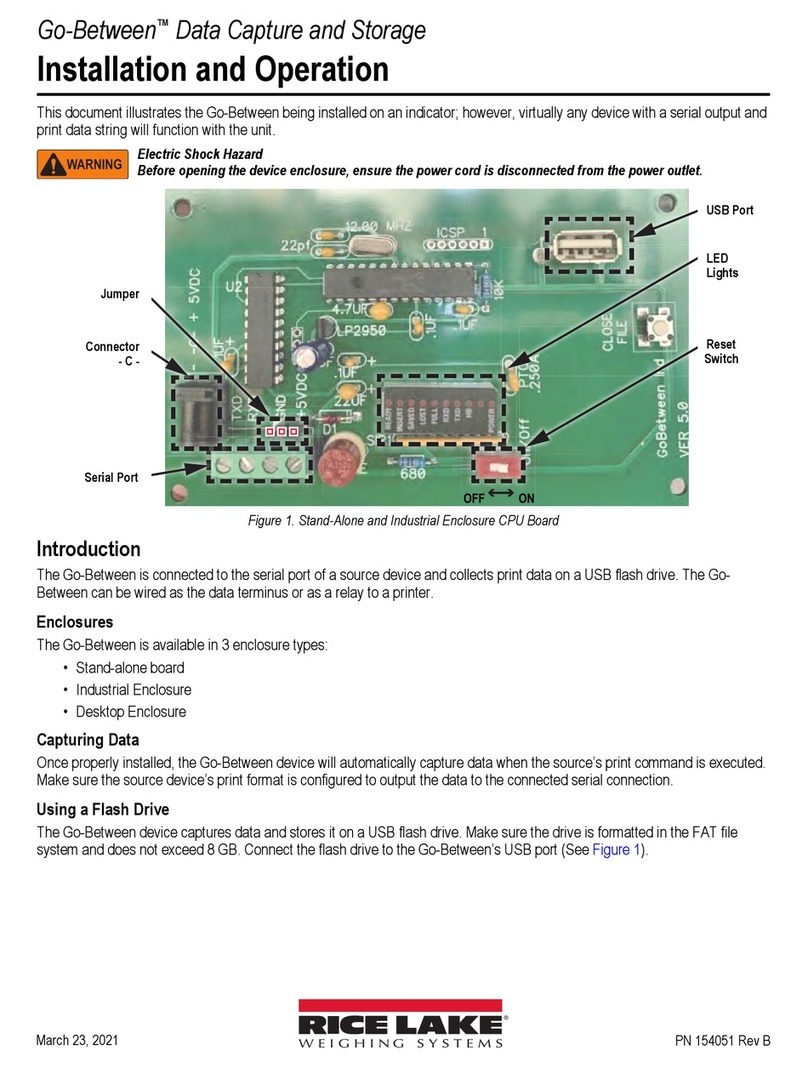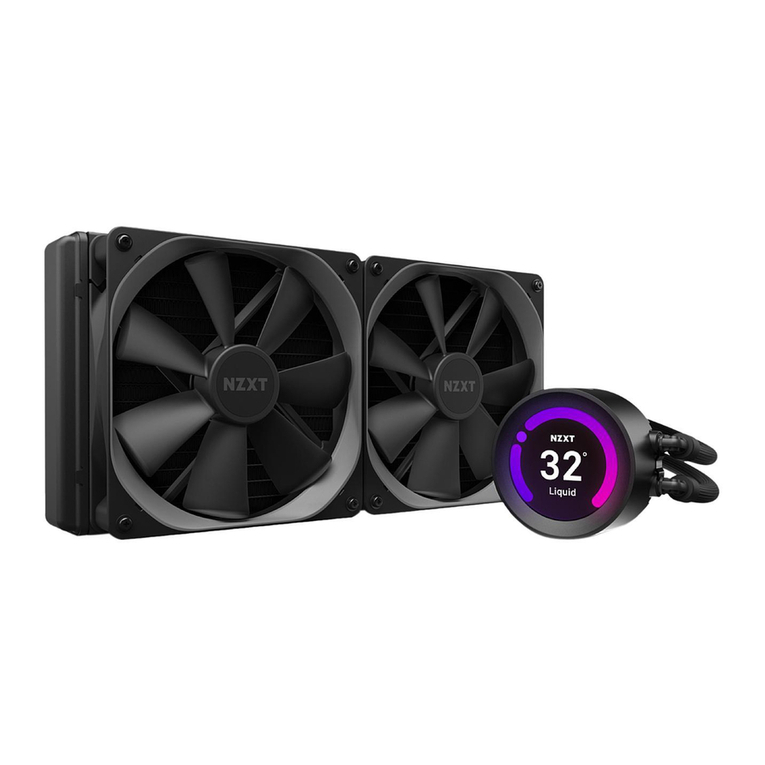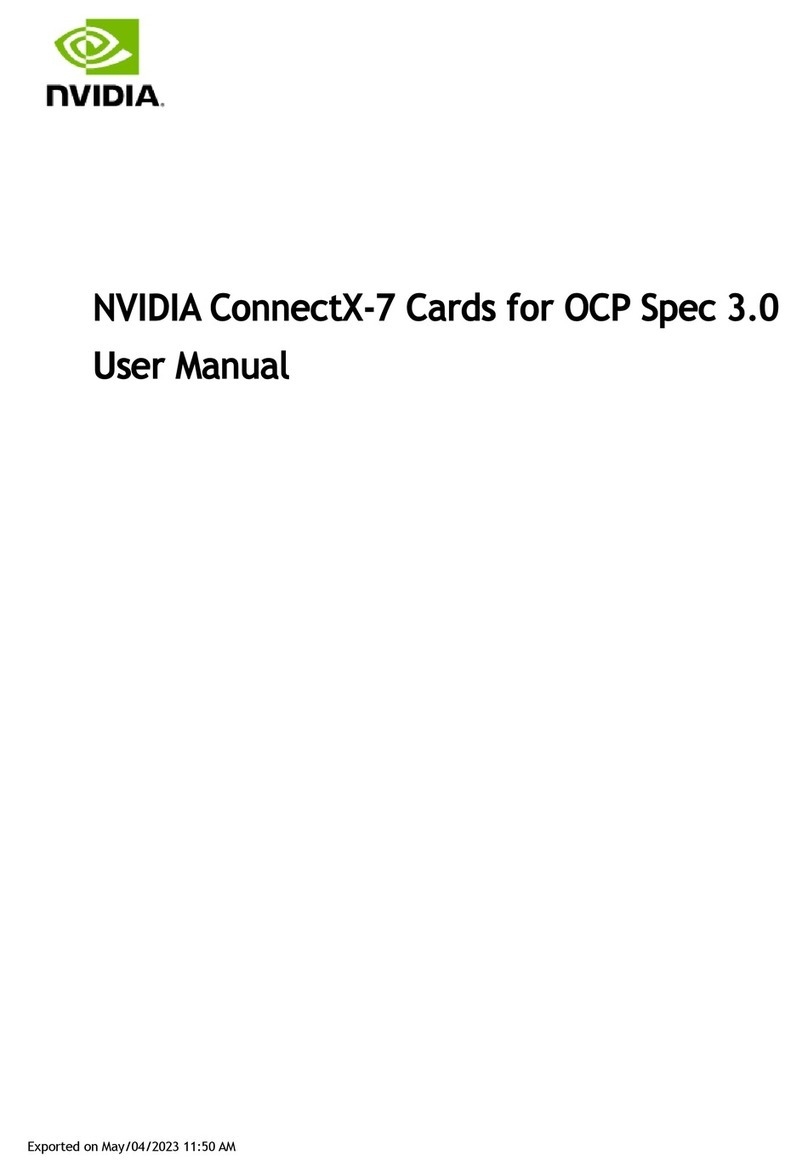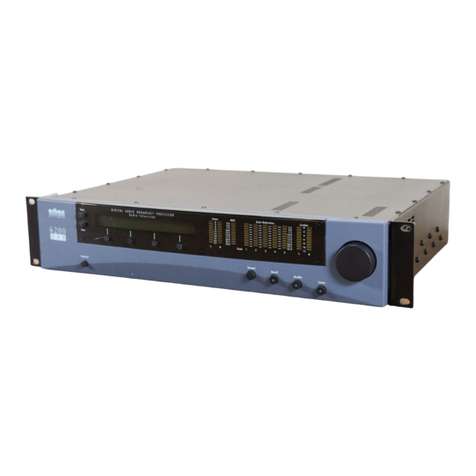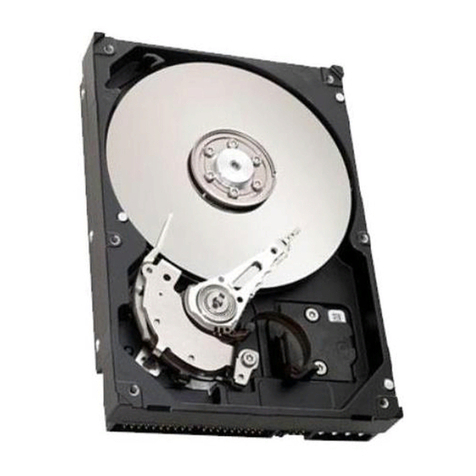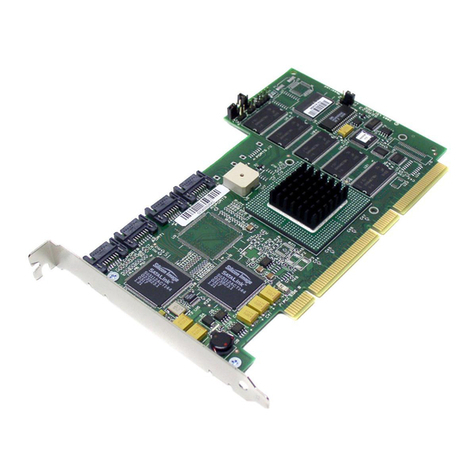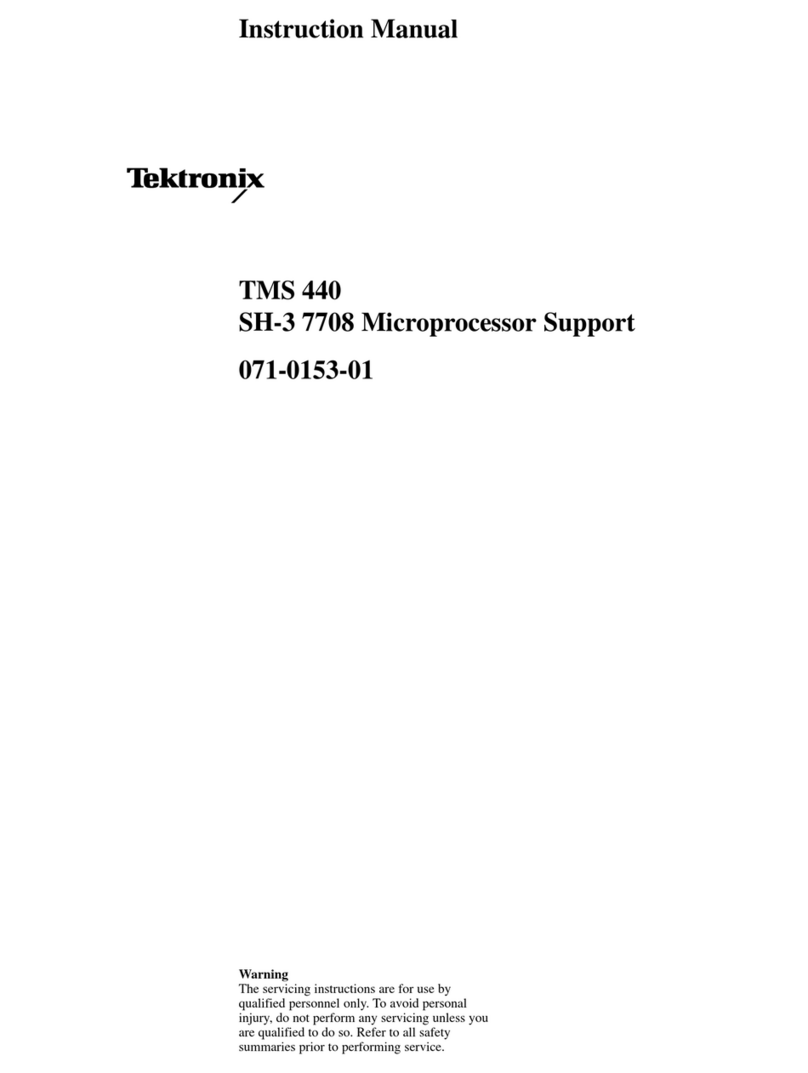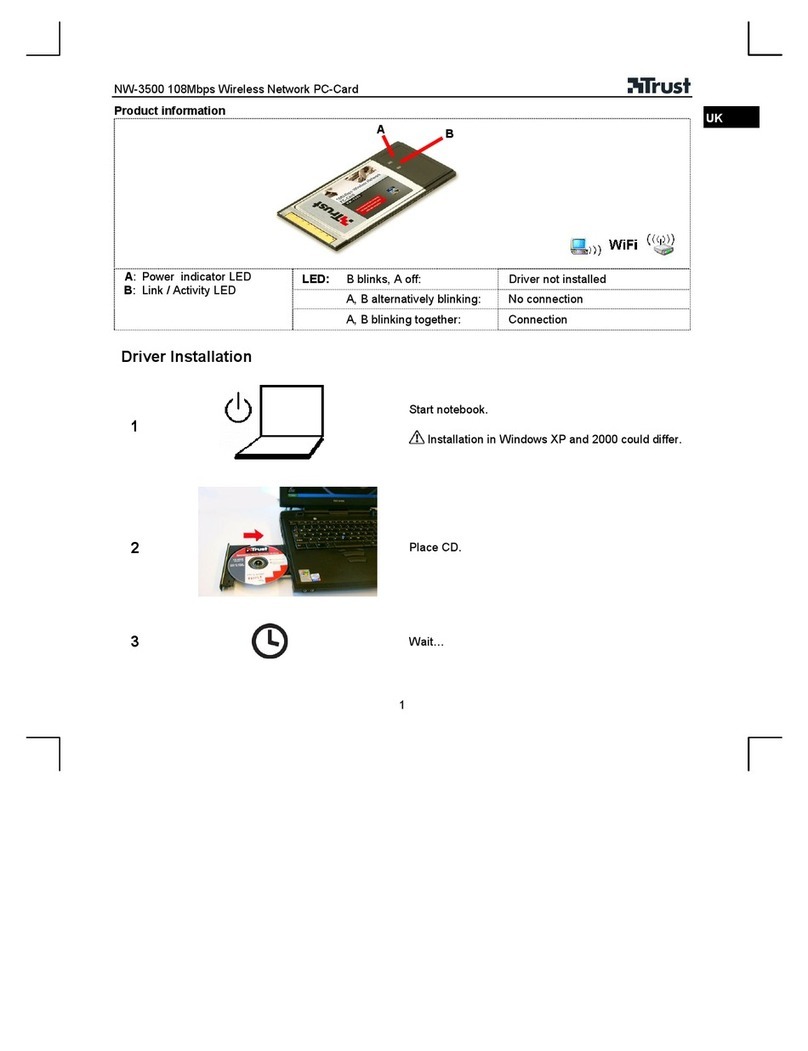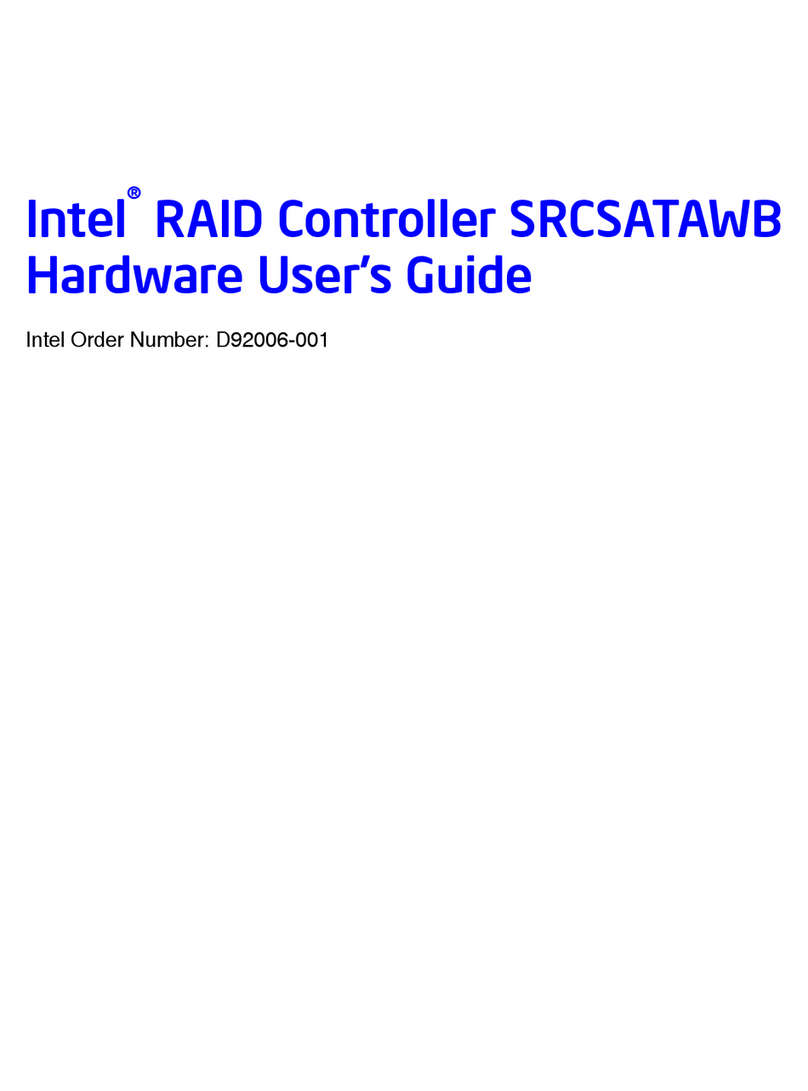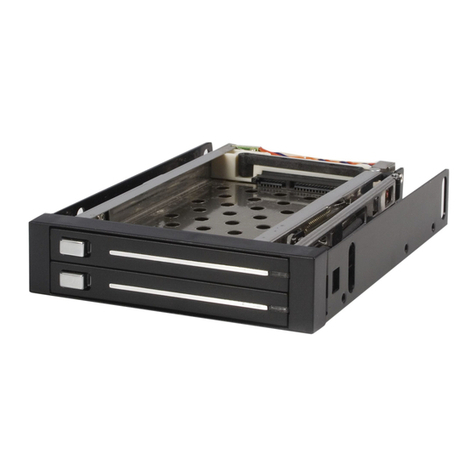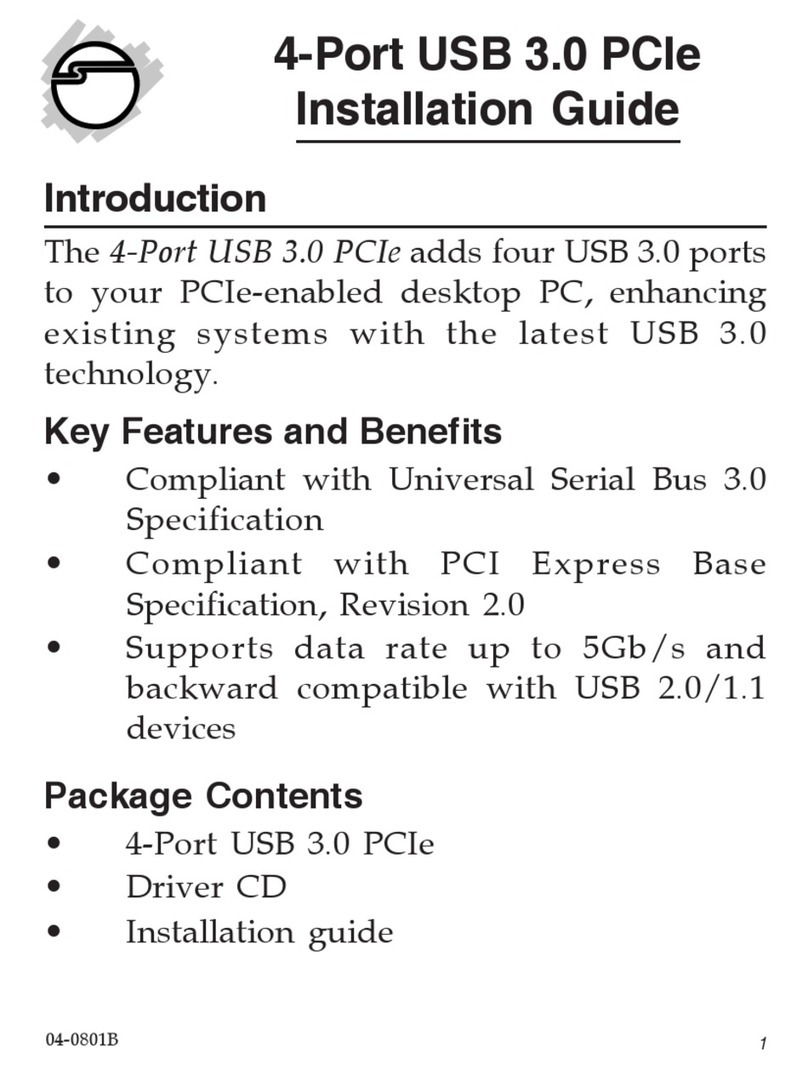Embedded Planet epConnected Equipment Operational manual

www.embeddedplanet.com
Embedded Planet Inc. | v1.0.0 | 11 Mar 2022
epConnected Equipment
C1D2 Industrial Data Acquisition + 4G LTE-M Cellular, GNSS, Bluetooth, & Sensors
Product User Manual

Embedded Planet, Inc. epConnected Equipment | Product User Manual Version: 1.0.0 | 11 Mar 22
Embedded Planet, Inc. | 31225 Bainbridge Rd Suite N, Solon, OH 44139 | 216-245-4180 | www.embeddedplanet.com | Page 1 of 46
About This Manual
The epConnected Equipment User Manual provides detailed information encompassing the design,
description, and integration of the epConnected Equipment device. For elaboration on drawings, software, or
other specific product details there may be other sources of information to which this document points as
reference. For the latest documentation, including document & certification updates, please always refer to the
Embedded Planet documentation page: https://www.embeddedplanet.com/product-documentation
Product Web Page
The epConnected Equipment product page by Embedded Planet provides description & resources
related to this product. This page can be located at https://www.embeddedplanet.com/connected-equipment
Acrynyms & Abbreviations
Term Description
EPI Embedded Planet, Inc.
ToF Time-of-Flight
IoT Internet of Things
PCBA Printed Circuit Board Assembly
epCE epConnected Equipment
I/O Inputs/Outputs
GPIO General Purpose Inputs / Outputs
IC Integrated Circuit [component]
BT Bluetooth
BLE Bluetooth Low Energy
IMU Inertial Measurement Unit [sensor]
LiPo Lithium-Ion Polymer

Embedded Planet, Inc. epConnected Equipment | Product User Manual Version: 1.0.0 | 11 Mar 22
Embedded Planet, Inc. | 31225 Bainbridge Rd Suite N, Solon, OH 44139 | 216-245-4180 | www.embeddedplanet.com | Page 2 of 46
Contents
1. Introduction ...................................................................................................................................................... 4
2. Orderable Part Numbers (TBD) ........................................................................................................................ 5
3. Additional Resources ......................................................................................................................................... 5
4. Feature Callouts ................................................................................................................................................ 6
4.1. Feature Callouts | Basic Assembly ............................................................................................................ 6
4.2. Feature Callouts | Board ........................................................................................................................... 7
4.3. Feature Callouts | Connectors (Enclosure) .............................................................................................. 8
5. System Block Diagram ........................................................................................................................................ 9
6. Device Specifications ........................................................................................................................................ 10
7. Agora Module ................................................................................................................................................... 11
8. Power ................................................................................................................................................................ 11
8.1. Power | AC Supply ..................................................................................................................................... 12
8.2. Power | Battery Charger ........................................................................................................................... 12
8.3. Power | Battery Monitor ............................................................................................................................ 14
9. Serial Communications .....................................................................................................................................15
10. 4-20mA Inputs ................................................................................................................................................... 16
11. 0-5VDC Inputs .................................................................................................................................................... 18
12. Buttons .............................................................................................................................................................. 19
13. Indicators .......................................................................................................................................................... 19
14. Interfaces ........................................................................................................................................................ 20
14.1. Interfaces: Power ..................................................................................................................................... 20
14.2. Interfaces: I2C Header ............................................................................................................................ 20
14.3. Interfaces: Programming Header........................................................................................................... 20
15. Tectonic Edge™ & Agora .................................................................................................................................. 21
16. Expansion Port & ADC ...................................................................................................................................... 22
17. Programming, Debugging, & Development ..................................................................................................... 26
17.1. Debug Connection .................................................................................................................................... 26
17.2. Debug Command Line Interface ............................................................................................................. 27
17.3. Debug Command Line Interface ............................................................................................................. 28
18. Pinouts ............................................................................................................................................................. 29
18.1. Pinouts: MCU Pinout................................................................................................................................... 29
19. Antennae .......................................................................................................................................................... 31
19.1. Antennae | Cellular Antenna ................................................................................................................ 31
19.2. Antennae | GNSS Antenna ....................................................................................................................... 34
20. Electrical Specifications ................................................................................................................................... 35
20.1. Pin Map + Maximum/Minimum Operation Ratings ................................................................................... 35
21. Mechanical ....................................................................................................................................................... 37
21.1. Mechanical | Physical Parameters ........................................................................................................... 37
21.2. Mechanical | Enclosure ........................................................................................................................... 37
21.3. Mechanical | Cable Glands ...................................................................................................................... 38
21.4. Mechanical | Drawings ............................................................................................................................ 38
22. Environmental Specifications .......................................................................................................................... 41
23. Regulatory Information ................................................................................................................................... 41
23.1. Cellular Certifications & Endorsements ................................................................................................. 41
23.2. General Regulatory Certificartions ........................................................................................................ 42

Embedded Planet, Inc. epConnected Equipment | Product User Manual Version: 1.0.0 | 11 Mar 22
Embedded Planet, Inc. | 31225 Bainbridge Rd Suite N, Solon, OH 44139 | 216-245-4180 | www.embeddedplanet.com | Page 3 of 46
23.3. RoHS Compliance ..................................................................................................................................... 42
23.4. Interferance Statement ......................................................................................................................... 42
23.5. FCC and ISED Compliance (Agora) ......................................................................................................... 43
23.6. Wireless Notice ....................................................................................................................................... 44
23.7. Antenna Notice: FCC & ISED ................................................................................................................... 44
23.8. End-Product Labeling Requirements ..................................................................................................... 44
23.9. FCC Additional Testing, Part 15 Subpart B Disclaimer ............................................................................. 45
24. Revision History ................................................................................................................................................ 46
Table 1 – Part Number Configurator ....................................................................................................................................... 5
Table 2 – Option Configurator ................................................................................................................................................ 5
Table 3 – Basic Assembly Information .................................................................................................................................... 6
Table 4 - Board connectors & Hardware ................................................................................................................................. 7
Table 5 – Enclosure Connectors & Hardware ......................................................................................................................... 8
Table 6 – Device specifications ............................................................................................................................................. 10
Table 7 – Power Input header pinout ................................................................................................................................... 11
Table 8 – Serial Signals pinout (TB5, J4) ................................................................................................................................ 15
Table 9 – 4-20mA Input header pinout (TB2) ....................................................................................................................... 16
Table 10 – 0-5VDC Input header pinout (TB3) ...................................................................................................................... 18
Table 11 – I2C pinout (J5) ...................................................................................................................................................... 20
Table 12 – Programming Header pinout (J6) ........................................................................................................................ 20
Table 13 – Tectonic Edge Signals pinout (J1) ........................................................................................................................ 21
Table 14 – ADC & EXPANDER pinout (U2, U5) ...................................................................................................................... 25
Table 15 – Input Channel pinout ........................................................................................................................................... 28
Table 16 – MCU Pinout (BT840 via Agora) ............................................................................................................................ 29
Table 17 – FXUB64.18.0150A electrical specifications ......................................................................................................... 32
Table 18 – Pin Map + Maximum/Minimum Operation Ratings ............................................................................................ 35
Table 19 – physical parameters ............................................................................................................................................ 37
Table 20 – environmental specifications .............................................................................................................................. 41
Table 21 – FCC & ISED max gain by band .............................................................................................................................. 44
Table 22 – revision history .................................................................................................................................................... 46

Embedded Planet, Inc. epConnected Equipment | Product User Manual Version: 1.0.0 | 11 Mar 22
Embedded Planet, Inc. | 31225 Bainbridge Rd Suite N, Solon, OH 44139 | 216-245-4180 | www.embeddedplanet.com | Page 4 of 46
1. Introduction
The epConnected Equipment module provides a solution for bringing wireless data collection & management to
industrial settings. The assembly contains a carrier board for the Agora wireless modem board that allows data
acquisition of industrial analog sensors with either 4-20mA outputs or 0-5V ratiometric outputs to be digitized and
sent over the available communication methods on the Agora (Cell, Bluetooth, LoRa). The epConnected Equipment
is intended for use in Class I Division 2 hazardous areas, and voltage sources for the transducer inputs are current-
limited to prevent the possibility of sparking during fault conditions of the field wiring. The board can be configured
to receive power from a universal 120VAC/240VAC source or from a solar panel array. In addition, the device is
provided with a lead acid backup battery. This system is designed to support connection to BLE sensors in Class I
Division 1 hazardous areas.
Powered by Agora
The epConnected Equipment leverages the capabilities of the Agora module by Embedded Planet. Agora is an
IoT solution platform that incorporates the processing power of an onboard MCU with the wireless connectivity of
cellular, Bluetooth, & LoRa while collecting sensor data. Onboard sensors can include 6-axis IMU, 9-axis IMU, Time-
of-Flight (ToF) distance, temperature/humidity, temperature/humidity/pressure/VOC gas, and sound/microphone.
The cellular module is available in configurations that include GNSS capabilities. Some configurations of Agora
include custom plastics & a LiPo battery with recharging capabilities. Agora can operate as a standalone module or
be integrated into new or existing hardware designs. To learn more about Agora & how to leverage its capabilities,
visit https://www.embeddedplanet.com/agora.

Embedded Planet, Inc. epConnected Equipment | Product User Manual Version: 1.0.0 | 11 Mar 22
Embedded Planet, Inc. | 31225 Bainbridge Rd Suite N, Solon, OH 44139 | 216-245-4180 | www.embeddedplanet.com | Page 5 of 46
2. Additional Resources
Agora module:
https://www.embeddedplanet.com/agora
epConnected Equipment:
https://www.embeddedplanet.com/connected-equipment
Embedded Planet Documentation:
https://www.embeddedplanet.com/product-documentation/#connected-equipment
The ordering code for the default configuration of the epConnected Equipment device is:
EPCNT-EQP1.2-A-P910070F
This configuration includes the following features as part of the product assembly:
1. Enclosure
2. Sealed lead-acid backup battery
3. Cellular CAT-M1 whip antenna
4. Module-mounted GNSS antenna
5. 4x 4-20mA input channels (with corresponding cable glands)
6. 4x 0-5V input channels (with corresponding cable glands)
7. 8x cable gland plugs for unused input channels
8. AC Mains power input (with corresponding cable gland)
9. US-style mains power cable
10. Agora module
a. Cellular (WW Cat M1)
b. Bluetooth
c. LoRa (915 MHz)
d. 4FF Nano SIM
e. Red GPIO-controlled LED
f. Sensors
i. Temperature/humidity/barometric pressure/VOC gas (BME680)
ii. Temperature/humidity (Si7021)
iii. 6-Axis IMU (ICM-20602)
iv. 9-Axis IMU (LSM9DS1)
v. Time-of-Flight/Distance (VL53L0)
vi. Microphone (ICS-43432)

Embedded Planet, Inc. epConnected Equipment | Product User Manual Version: 1.0.0 | 11 Mar 22
Embedded Planet, Inc. | 31225 Bainbridge Rd Suite N, Solon, OH 44139 | 216-245-4180 | www.embeddedplanet.com | Page 6 of 46
3. Feature Callouts
3.1. Feature Callouts | Basic Assembly
TABLE 1 – BASIC ASSEMBLY INFORMATION
Category Reference Component Type Description / Purpose
Antenna 1 Cellular antenna Cellular connectivity
PCBA/modem 2 Agora modem Processing, connectivity management
Battery 3 Lead acid battery Backup power supply
1:
Cellular
antenna
2: Agora PCBA
3: Backup
battery

Embedded Planet, Inc. epConnected Equipment | Product User Manual Version: 1.0.0 | 11 Mar 22
Embedded Planet, Inc. | 31225 Bainbridge Rd Suite N, Solon, OH 44139 | 216-245-4180 | www.embeddedplanet.com | Page 7 of 46
3.2. Feature Callouts | Board
TABLE 2 - BOARD CONNECTORS & HARDWARE
Category Reference
Part
Component Type Description / Purpose
Connector 1
J4
Shrouded header RS-232 (passthrough available through TB5)
Pushbutton 2
S1
CONFIG pushbutton General use; can be used for configuring sensors
Connector 3
J6
Pin header Cortex debug header
Connector 4
J1
Tectonic Edge™ Board Edge/Finger interface for Agora
Connector 5
J5
Header option I2C access for external devices
Pushbutton 6
S2
RESET pushbutton Press to reset the system
Mechanical 7
MH1
-
4
Board mounting holes Mounting hardware for use with enclosure
Mechanical 8
SO1
-
3
Agora mounting posts For securing Agora to the host board
Connector 9
TB3
Terminal block inputs 0-5VDC inputs
Connector 10
J2, J3
Battery terminals Connection to lead acid backup battery
Connector 11
TB4
Terminal block inputs Connection to off-board solar panel
Indication 12
D2, D3
Charge status LEDs Indication for status of battery charging
Connector 13
TB1
Terminal block inputs Connection to AC mains input
Connector 14
TB2, TB5
Terminal block inputs Serial ports, 4-20mA inputs
1:
RS
-
232 header
1
4
: Serial,
4-20mA
inputs
1
3
: AC input
8
:
Agora
mounting posts
12
:
Charge status LEDs
9
: 0
-
5VDC
inputs
6
: RESET
button
2: CONFIG
button
4
: Tectonic Edge™ connector
5
:
I2C header
7
: Board mounting holes (x4)
10
:
Battery
terminals
1
1
: Solar panel terminals
3:
Cortex debug header

Embedded Planet, Inc. epConnected Equipment | Product User Manual Version: 1.0.0 | 11 Mar 22
Embedded Planet, Inc. | 31225 Bainbridge Rd Suite N, Solon, OH 44139 | 216-245-4180 | www.embeddedplanet.com | Page 8 of 46
3.3. Feature Callouts | Connectors (Enclosure)
TABLE 3 – ENCLOSURE CONNECTORS & HARDWARE
Category Reference
Component Type Description / Purpose
Mechanical 1 Enclosure hardware Screws for mounting enclosure lid
Connector 2 Cable glands: 0-5VDC inputs See “Interfaces: 0-5VDC Inputs” for detail
Connector 3 Cable gland: Power input See “Interfaces: Power” for detail
Mechanical 4 Enclosure lid Lid with seal for assembly enclosure
Connector 5 Cable glands: 4-20mA inputs See “Interfaces: 4-20mA Inputs” for detail
2.
0
-
5VDC input ports
3.
Power input port
5.
4
-
20mA
input ports
4.
Enclosure lid
1.
Enclosure lid screws

4. System Block Diagram

Embedded Planet, Inc. epConnected Equipment | Product User Manual Version: 1.0.0 | 11 Mar 22
Embedded Planet, Inc. | 31225 Bainbridge Rd Suite N, Solon, OH 44139 | 216-245-4180 | www.embeddedplanet.com | Page 10 of 46
5. Device Specifications
TABLE 4 – DEVICE SPECIFICATIONS
Feature/Specification Description
Cellular Capabilities
Cellular Technologies: LTE-M (LTE CAT M1), SMS
Lower power modes: PSM, eDRX
Operating Frequencies: 699MHz to 1980MHz
Cellular Operating Mode: Half-duplex FDD
RF Output Power: Up to +23 ±2 dBm (Power Class 3)
Internet Protocols IPv4/IPv6 stack with TCP and UDP protocols
TLS/DTLS
LTE CAT M1 Specification
Bands (WW): B1(2100), B2(1900), B3(1800), B4(AWS1700), B5(850), B8(900), B12(700),
13(700), B18(800), B19(800), B20(800), B26(850), B28(700)
Bands (NA): B2(1900), B4(AWS1700), B12(700) B13(700)
Uplink: up to 375 kbps
Downlink: up to 300 kbps
SIM
Removable: 4FF (nano) SIM card slot
Board-mounted: MFF2
Internal: Telit simWISE™
Cellular Certifications
PTCRB: Complete (Agora)
AT&T: Complete (Agora)
Verizon: Complete (Agora)
GNSS Specifications
Constellations: GPS, GLONASS, BeiDou, Galileo, QZSS
Tracking Sensitivity: -161dBm
Navigation Sensitivity: -158dBm
Cold Start Sensitivity: -146dBm
Input Voltage
AC
Input
:
90VAC
-
240VAC
Solar Panel: 12V DC nominal
Sealed Lead-Acid Battery: 12V DC nominal (10-13Vdc)
Dimensions Enclosure with cable glands: 224 x 280 x 128 (mm) | 8.82 x 11.02 x 5.04 (in)
Environmental Operating Temperature Range: -20°C to +60°C
Storage Temperature Range: -20°C to +60°C
Sensor Options Environmental: Temperature, humidity, barometric pressure, VOC gas (via Agora)
Inertial: 6-axis IMU, 9-axis IMU (accelerometer, gyroscope, magnetometer) (via Agora)
Range: Time-of-Flight (ToF) (via Agora)
Fault-Protected I/O 4-20 mA Input Channels: x4
0-5 VDC Input Channels: x4

Embedded Planet, Inc. epConnected Equipment | Product User Manual Version: 1.0.0 | 11 Mar 22
Embedded Planet, Inc. | 31225 Bainbridge Rd Suite N, Solon, OH 44139 | 216-245-4180 | www.embeddedplanet.com | Page 11 of 46
6. Agora Module
The epConnected Equipment device leverages the Agora board by Embedded Planet for its cellular & GNSS
connectivity. The MCU on Agora is Nordic’s nRF52840; details of this MCU can be found here:
https://www.nordicsemi.com/Products/Low-power-short-range-wireless/nRF52840. Shown below is a figure
outlining the basic features on Agora as relevant to the epConnected Equipment. More detail on the Agora board is
available through the Embedded Planet website & documentation.
7. Power
The power to the epConnected Equipment board is supplied by a 2.2Ah, 12V sealed lead acid (SLA)
battery (J2, J3). The battery is charged through a Texas Instruments BQ24650 battery charger (U12). The
battery charger power is sourced from either a universal AC input (90VAC to 240VAC) or through a nominal 12V
solar panel. In the case of the universal AC input, the AC input voltage is converted to 24VDC 10W via AC/DC
converter U1 (IRM-10-24 ). The two charger sources are diode-auctioneered; the higher input voltage of the
two sources succeeds as the power input that feeds the charger.
TABLE 5 – POWER INPUT HEADER PINOUT
Category
Signal
Connector
Pin
Notes
AC Input
L
TB1
1
Line
AC Input
GND
TB1
2
Ground
AC Input
N
TB1
3
Neutral
Solar Panel
(
-
)
TB4
1
Ground
Solar Panel
(+)
TB4
2
12V nominal
Battery
(+)
J2
1
12V SLA nominal
Battery
(
-
)
J3
1
Ground/reference
Tectonic Edge
™
interface
BT840 (nRF52840)
MCU+bluetooth
module
Telit ME910
cellular+GNSS
module
TB1: AC Input
TB4: Solar panel 12VDC Input
J2, J3: 12VDC battery input

Embedded Planet, Inc. epConnected Equipment | Product User Manual Version: 1.0.0 | 11 Mar 22
Embedded Planet, Inc. | 31225 Bainbridge Rd Suite N, Solon, OH 44139 | 216-245-4180 | www.embeddedplanet.com | Page 12 of 46
7.1. Power | AC Supply
The accepted AC input to the epConnected Equipment board is universal 85VAC to 264VAC,
47Hz to 440Hz provided by the Meanwell IRM-10-24 10W (U1) single out encapsulated supply. The fuse
must be able to withstand the inrush current. Fuses are described with a maximum I2T parameter:
𝐼𝑇 = 1
5𝐼×0.005
EQUATION 1: FUSE MELTING
Where:
- Ip = Inrush current
The circuit is fused on the AC line input using a Shurter 3403.0272.23 fuse with an I2T rating of 1.1 (F1).
The inrush current for the system can be as high as 30A at 230VAC with a tuned system input I2T rating
of 0.9.
7.2. Power | Battery Charger
The battery charger is a Texas Instruments BQ24650 switching buck controller (U12) with an
external SI7288 dual FET that drives the inductor.
The circuit is designed to prevent loading the battery if the solar panels experience certain shade
conditions (TI SLVA829–September2016) and modifications for SLA battery charging (TI - SLUA992–
April2020). The controller chip uses maximum power point (MPP) monitoring to maximize the power
available from a solar cell. The controller allows for charge termination to be disabled (R50 would be not
populated; R53 then populated with 10k). The charger has provisions for an external 10K@25C
thermistor (TP7 to TP8) and can be enabled by removing R54. The thermistor would be mounted by or
embedded in the battery to monitor the actual battery temperature.
The battery charge profile follows the following diagram:
D20:
LED illuminates green when the
battery is fully charged
D21: LED illuminates blue while the
battery is charging

Embedded Planet, Inc. epConnected Equipment | Product User Manual Version: 1.0.0 | 11 Mar 22
Embedded Planet, Inc. | 31225 Bainbridge Rd Suite N, Solon, OH 44139 | 216-245-4180 | www.embeddedplanet.com | Page 13 of 46
The charge current limit is set with R56; a current monitor resistor on the output of the power inductor
with the following formula:
𝐼𝐶ℎ𝑎𝑟𝑔𝑒 = 40𝑚𝑉
𝑅56
Where:
- ICharge is the current limit in Amps
- R56 is the resistor value in Ohms.
With R56 set to 0.110 Ohms the charge current is limited to 0.363A which is based on the AC/DC supply
(U1) having an available capacity of 0.4A (10W at 24V). For installations that do not have the AC option
the current limit can be increased (R56 can be replaced by a lower value).
The battery charge voltage limit is set by R48 and R49 using the following formula:
𝑉𝑏𝑎𝑡 = 2.11+ 𝑅48
𝑅49||𝑅6
Where:
- Vbat is the charge voltage
- R48, R49, and R6 are in Ohms
With R48 set to 536k, R49 set to 100k, and R6 set to 806k the charge voltage is set to 14.75V. Once
charged to 14.75, STAT2 is pulled low to illuminate D20 (the green “charged” LED). With STAT2 output
going low, Q12 turns off (removing R6 from the network) which changes the charge voltage setting to
the following:
𝑉𝑏𝑎𝑡 = 2.11+𝑅48
𝑅49
With the above values, the charge voltage threshold is then lowered to 13.35V. The output of the
battery then is allowed to drop by approximately 50mV (Vrechg) below the 13.35V threshold before
charging is again started. Note that R58 is implemented as a zero ohm resistor to allow breaking the
feedback network or to introduce addition filter poles in the feedback loop.
Should the battery become heavily discharged, the charger falls into a pre-charge state which is a
feature used to revive deeply discharged cells. If the Vlowv threshold is not reached within 30 minutes
the charger turns off and a fault is indicated on the status pins.
The pre-charge current is set using the following:
𝐼𝑃𝑟𝑒𝐶ℎ𝑎𝑟𝑔𝑒 = 4𝑚𝑉
𝑅56
Where:
- IPreCharge is the current limit in Amps
- R56 is the resistor value in Ohms.
With R56 set to 0.110 Ohms the pre-charge current is limited to 0.036A.

Embedded Planet, Inc. epConnected Equipment | Product User Manual Version: 1.0.0 | 11 Mar 22
Embedded Planet, Inc. | 31225 Bainbridge Rd Suite N, Solon, OH 44139 | 216-245-4180 | www.embeddedplanet.com | Page 14 of 46
7.3. Power | Battery Monitor
The epConnected Equipment device includes accommodations for monitoring the battery level of the
included seal lead acid backup battery.
The Vaux source is connected through a resistive divider to the ADC. The maximum end of the user
range for the battery monitor is 20.45V (15.45V + 5V). The minimum end of the user range for the battery
monitor is less than 5V (when the ADC reference voltage source will be brought out of tolerance) to 3.0V when
the main processor can no longer operate.
The following formula can be used to convert the ADC reading for this channel into a battery voltage:
𝑈𝑠𝑒𝑟𝑈𝑛𝑖𝑡𝑠𝑃𝑒𝑟𝐵𝑖𝑡 = 𝑈𝑠𝑒𝑟𝑅𝑎𝑛𝑔𝑒() −𝑈𝑠𝑒𝑟𝑅𝑎𝑛𝑔𝑒()
(2 −1)
EQUATION 2: BIT WEIGHT IN USER UNITS
𝑉𝑎𝑙𝑢𝑒𝐼𝑛𝑈𝑠𝑒𝑟𝑈𝑛𝑖𝑡𝑠 = (𝐴𝑐𝑡𝑢𝑎𝑙𝐴𝐷𝐶𝑅𝑒𝑎𝑑𝑖𝑛𝑔 × 𝑈𝑠𝑒𝑟𝑈𝑛𝑖𝑡𝑠𝑃𝑒𝑟𝐵𝑖𝑡)+𝑈𝑠𝑒𝑟𝑅𝑎𝑛𝑔𝑒()
EQUATION 3: ADC READING TO USER UNITS
𝐵𝑎𝑡𝑡𝑒𝑟𝑦 𝑉𝑜𝑙𝑡𝑎𝑔𝑒(𝑉)= 𝐴𝑐𝑡𝑢𝑎𝑙𝐴𝐷𝐶𝑅𝑒𝑎𝑑𝑖𝑛𝑔 × 1.21892E− 6
EQUATION 4: SIMPLIFIED ADC TO BATTERY VOLTAGE FORMULA
Where:
- UserRange(min) is the output of the device at 0V
- UserRange(max) is the output of the device at 20.45V
- UserUnitsPerBit is the bit weight set in user units (1.21892E-6 V/bit)
- ActualADCReading is the value read from the ADC (see ‘ROP_AC’ in Section Error! Reference source not
found.)
- ValueInUserUnits is the ADC value converted into user units (for example, at a 14.4V input where
ActualADCReading = 11813784, ValueInUserUnits = 14.4V)
This graph to the left shows
the expected error limits for
the battery voltage monitor
including the divider resistor
tolerance errors and the
tolerance of the ADC
reference voltage.

Embedded Planet, Inc. epConnected Equipment | Product User Manual Version: 1.0.0 | 11 Mar 22
Embedded Planet, Inc. | 31225 Bainbridge Rd Suite N, Solon, OH 44139 | 216-245-4180 | www.embeddedplanet.com | Page 15 of 46
8. Serial Communications
Serial communications terminal block TB5 allows access to the epConnected Equipment device’s debug
lines over RS-232 and RS-485. Pass-through for the RS-232 lines is available through header component J4.
TABLE 6 – SERIAL SIGNALS PINOUT (TB5, J4)
The RS-232 and RS-485 ports can also be used to communicate with the Agora module. The system can
be configured to support either RS-485 or RS-232, but not both at the same time (U7 is configured with soldered
components). By default the system is set up to broadcast debug data in RS-232 format (U7 is set for RS-232). In
either mode the firmware needs to be set up to manage the data protocol of that mode (the data direction in
RS-485 mode must be manually managed as it is half-duplex). The RS-232 lines can be accessed through J4
during RS-232 operation only (cannot be accessed during RAS-485 operation).
To configure U7/TB5 for RS-232:
R103 is unpopulated
R104 is populated with 10k Ohm, 0603 resistor
R3 is populated with a 0 Ohm, 0603 resistor
R4 is populated with a 0 Ohm, 0603 resistor
To configure U7/TB5 for RS-485:
R103 is populated with 10k Ohm, 0603 resistor
R104 is unpopulated
R3 is unpopulated
R4 is unpopulated
When using the RS-232 or RS-485 port, the transmission direction must be set by the Agora application through
the I2C expander: UART_DE is set high to transmit, and low to receive.
The RS-232 and RS-485 lines are managed by MaxLinear component SP330EEY (U7). From the perspective of the
connections labeled on TB5:
- RS232-TX: routed to J4 pin 3, routed to U7 (SP330) pin 6 (T1OUT,B/Z) via R4
- RS232-RX: routed to J4 pin 1, routed to U7 (SP330) pin 16 (R2IN,A) via R3
- RS485-A: routed to U7 (SP330) pin 7 (T2OUT,A/Y)
- RS485-B: routed to U7 (SP330) pin 6 (T1OUT,B/Z), routed to J4 pin 3 via R4
More detail on the SP330EEY can be found at:
https://www.maxlinear.com/product/interface/serial-transceivers/multiprotocol/dual-protocol/sp330
Category
Signal
TB5 Pin
J4 Pin
U7 Pin
Notes
Power
V+
1
-
-
Supply
Reference
GND
2
2
5, 15
0V reference
RS
-
232
RS232
-
TX
3
3
6
RS
-
232 TX
RS
-
232
RS232
-
RX
4
1
16
RS
-
232 RX
RS
-
485
RS485
-
A
5
-
7
RS
-
485 A
RS
-
485
RS485
-
B
6
3
6
RS
-
485 B
RS232
-
TX
GND
RS232
-
RX

Embedded Planet, Inc. epConnected Equipment | Product User Manual Version: 1.0.0 | 11 Mar 22
Embedded Planet, Inc. | 31225 Bainbridge Rd Suite N, Solon, OH 44139 | 216-245-4180 | www.embeddedplanet.com | Page 16 of 46
9. 4-20mA Inputs
The epConnected Equipment device features 4 separate 4-20mA input channels. Access to the 4-20mA
input channels is provided through terminal block component TB2. These channels are designed to interface
with 4-20mA sensors and are routed through cable glands in the enclosure. Each channel contains a positive
terminal and negative terminal for the current loop.
TABLE 7 – 4-20MA INPUT HEADER PINOUT (TB2)
The I/O wiring to the board is designed to be suitable for use in a CID2 hazardous area without requiring
special consideration for the transducer wiring methods. The current limiting circuits clamp the current in each
sensor just above the 4-20mA operating range and can be given entity parameters when connect to CID2 rated
sensors. These same individual sensor protection circuits can be used in ordinary locations without issue and
prevent high current flow (which would shorten battery life and/or prevent system operation) if sensor leads
becomes shorted.
Signal
Pin
Description
ADC connection
CH1(+)
1
CH1 4
-
20mA positive
U2 pin 7 AIN0
CH1(
-
)
2
CH1
4
-
20mA negative
CH2(+)
3
CH2 4
-
20mA positive
U2 pin 6 AIN1
CH2(
-
)
4
CH2 4
-
20mA negative
CH3(+)
5
CH3 4
-
20mA
positive
U2 pin 5 AIN2
CH3(
-
)
6
CH3 4
-
20mA negative
CH4(+)
7
CH4 4
-
20mA positive
U2 pin 4 AIN3
CH4(-) 8 CH4 4-20mA negative
CH1
CH2
CH3
CH4

Embedded Planet, Inc. epConnected Equipment | Product User Manual Version: 1.0.0 | 11 Mar 22
Embedded Planet, Inc. | 31225 Bainbridge Rd Suite N, Solon, OH 44139 | 216-245-4180 | www.embeddedplanet.com | Page 17 of 46
The 4-20mA inputs use a 51 ohm, 1% I to V conversion resistor, so the full span of the ADC is not used
and the resistor tolerance itself adds a possible +/-1% error to the ADC reading on top of the ADC reference
voltage error source:
𝐴𝐷𝐶𝐶𝑜𝑢𝑛𝑡() =4𝑚𝐴×51𝑂ℎ𝑚𝑠
𝑉𝑜𝑙𝑡𝑠𝑃𝑒𝑟𝐵𝑖𝑡
EQUATION 5: 4-20MA MINIMUM ADC COUNT
𝐴𝐷𝐶𝐶𝑜𝑢𝑛𝑡() =20𝑚𝐴×51𝑂ℎ𝑚𝑠
𝑉𝑜𝑙𝑡𝑠𝑃𝑒𝑟𝐵𝑖𝑡
EQUATION 6: 4-20MA MAXIMUM ADC COUNT
Where:
4mA and 20mA make up the output range from a 4-20mA transducer
51Ohms is the current-to-voltage conversion resistor on the PCB
VoltsPerBit is as calculated in Figure 134
ADCCount(min) is calculated as 684510
ADCCount(max) is calculated as 3422551
For a specific sensor, the above values can then be converted into user units with the following formulas:
The bit weight in user units can be calculated:
𝑈𝑠𝑒𝑟𝑈𝑛𝑖𝑡𝑠𝑃𝑒𝑟𝐵𝑖𝑡 = 𝑈𝑠𝑒𝑟𝑅𝑎𝑛𝑔𝑒() −𝑈𝑠𝑒𝑟𝑅𝑎𝑛𝑔𝑒()
𝐴𝐷𝐶𝐶𝑜𝑢𝑛𝑡() −𝐴𝐷𝐶𝐶𝑜𝑢𝑛𝑡()
EQUATION 7: BIT WEIGHT IN USER UNITS
𝑉𝑎𝑙𝑢𝑒𝐼𝑛𝑈𝑠𝑒𝑟𝑈𝑛𝑖𝑡𝑠 = 𝐴𝑐𝑡𝑢𝑎𝑙𝐴𝐷𝐶𝑅𝑒𝑎𝑑𝑖𝑛𝑔 −𝐴𝐷𝐶𝐶𝑜𝑢𝑛𝑡() × 𝑈𝑠𝑒𝑟𝑈𝑛𝑖𝑡𝑠𝑃𝑒𝑟𝐵𝑖𝑡 + 𝑈𝑠𝑒𝑟𝑅𝑎𝑛𝑔𝑒()
EQUATION 8: ADC READING TO USER UNITS
Where:
- UserRange(min) is the output of the device at 4mA in user units (for example 0psi).
- UserRange(max) is the output of the device at 20mA in user units (for example 1500psi).
- ADCCount(min) is from Equation 5
- ADCCount(max) is from Equation 6
- UserUnitsPerBit is the bit weight set in user units (for example 0.000547837psi/bit).
- ActualADCReading is the value read from the ADC (see ‘ROP_AC’ in Section Error! Reference source not
found.).
- ValueInUserUnits is the ADC value converted into user units (for example, at a 20mA input where
ActualADCReading = 3422551, ValueInUserUnits = 1500psi).
Power to the I/O system (including the 4-20mA inputs, 0-5Vdc inputs, and ADC chip U2) (IO_ENABLE) can be
controlled by pin 13/GP3 of the MCP23008 (U5). This is an active-high signal.

Embedded Planet, Inc. epConnected Equipment | Product User Manual Version: 1.0.0 | 11 Mar 22
Embedded Planet, Inc. | 31225 Bainbridge Rd Suite N, Solon, OH 44139 | 216-245-4180 | www.embeddedplanet.com | Page 18 of 46
10. 0-5VDC Inputs
The epConnected Equipment device features 4 channels of 0-5VDC inputs for connection to ratiometric
sensors. These channels are hosted through terminal block component TB3. Each channel has a 5V supply line,
a 0-5V input line, and a ground reference line. Like the 4-20mA interface, the 5V out interface is designed to
incorporate a current limiting circuit and is also routed through cable glands in the enclosure.
TABLE 8 – 0-5VDC INPUT HEADER PINOUT (TB3)
Signal
Pin
Description
ADC connection
CH1(V+)
12
CH1
5V
supply voltage
U2 pin 21
AIN9
CH1(IN)
11
CH1 0
-
5V input voltage
U2 pin 21 AIN9
CH1(GND)
10
CH1 GND reference
U2 pin 21 AIN9
CH2(V+)
9
CH2 5V supply voltage
U2 pin 22 AIN8
CH2(IN)
8
CH2 0
-
5V input voltage
U2 pin 22 AIN8
CH2(GND)
7
CH2 GND reference
U2 pin 22 AIN8
CH3(V+)
6
CH3 5V supply voltage
U2 pin 2 AIN5
CH3(IN)
5
CH3 0
-
5V input voltage
U2 pin 2 AIN5
CH3(GND)
4
CH3 GND reference
U2 pin 2 AIN5
CH4(V+)
3
CH4 5V supply voltage
U2 pin 7 AIN4
CH4(IN)
2
CH4 0
-
5V input voltage
U2 pin 7 AIN4
CH4(GND)
1
CH4 GND
reference
U2 pin 7 AIN4
CH1
CH2
CH3
CH4

Embedded Planet, Inc. epConnected Equipment | Product User Manual Version: 1.0.0 | 11 Mar 22
Embedded Planet, Inc. | 31225 Bainbridge Rd Suite N, Solon, OH 44139 | 216-245-4180 | www.embeddedplanet.com | Page 19 of 46
The 5V ratio metric inputs make use of the full ADC range and can be converted to user units using the
following formulas. There is no I/V error source, though each port is powered separately. The ADC reference
error and the sensor supply are not the same, so voltage errors in each can be cumulative errors in the ADC
reading:
𝑈𝑠𝑒𝑟𝑈𝑛𝑖𝑡𝑠𝑃𝑒𝑟𝐵𝑖𝑡 = 𝑈𝑠𝑒𝑟𝑅𝑎𝑛𝑔𝑒() −𝑈𝑠𝑒𝑟𝑅𝑎𝑛𝑔𝑒()
(2 −1)
FIGURE 9: BIT WEIGHT IN USER UNITS
𝑉𝑎𝑙𝑢𝑒𝐼𝑛𝑈𝑠𝑒𝑟𝑈𝑛𝑖𝑡𝑠 = (𝐴𝑐𝑡𝑢𝑎𝑙𝐴𝐷𝐶𝑅𝑒𝑎𝑑𝑖𝑛𝑔 × 𝑈𝑠𝑒𝑟𝑈𝑛𝑖𝑡𝑠𝑃𝑒𝑟𝐵𝑖𝑡)+𝑈𝑠𝑒𝑟𝑅𝑎𝑛𝑔𝑒()
FIGURE 10: ADC READING TO USER UNITS
Where:
- UserRange(min) is the output of the device at 0V in user units (for example 0psi).
- UserRange(max) is the output of the device at 5V in user units (for example 1500psi).
- UserUnitsPerBit is the bit weight set in user units (for example 0.000547837psi/bit).
- ActualADCReading is the value read from the ADC (see ‘ROP_AC’ in Section Error! Reference source not
found.).
- ValueInUserUnits is the ADC value converted into user units (for example, at a 20mA input where
ActualADCReading = 3422551, ValueInUserUnits = 1500psi).
Power to the I/O system (including the 4-20mA inputs, 0-5Vdc inputs, and ADC chip U2) (IO_ENABLE) can be
controlled by pin 13/GP3 of the MCP23008 (U5). This is an active-high signal.
11. Buttons
S1 – ‘CONFIG’
– button that can be queried by the application firmware, intended for use in configuring BLE sensors.
S2 – ‘RESET’
– reset for Agora.
12. Indicators
D12 – Blue LED
– can be controlled by application firmware.
D6 – Charging Blue LED
– Indicates that the SLA battery is charging.
D5 – Charged Green LED
– Indicates that the SLA battery is fully charged.
Table of contents
Other Embedded Planet Computer Hardware manuals
